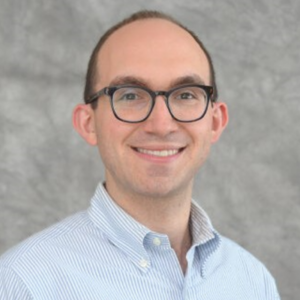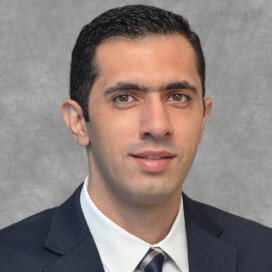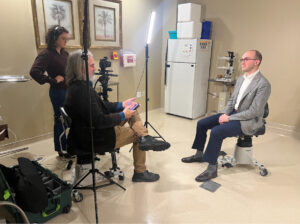Two UNC Department of Ophthalmology clinical faculty — Corneal Disease and Corneal Surgery specialist Hussam Banna, MD, and Oculofacial Plastic and Reconstructive Surgery specialist Daniel Rubinstein, MD — joined UNC Facial Nerve Center Director Matthew Miller, MD (Department of Otolaryngology) to perform the first corneal neurotization at UNC in October 2023. The procedure is a life-changing surgery for patients with neurotrophic keratitis (NK).
Affecting 5,000 to 10,000 individuals across the U.S., NK is a rare ocular condition causes loss of corneal sensation and can lead to permanent vision loss if left untreated. Caused by ocular trauma, infectious disease or brain surgery, NK damages the cornea’s nerve supply and disables its ability to keep itself moist or maintain a healthy architecture. As a result, the damaged cornea experiences ulceration, scarring, and eventually a permanent loss of vision if this condition is left untreated. 
UNC Hospitals’ multi-disciplinary team becomes one of only 20 to 30 groups across the U.S. that perform corneal neurotization. Both nationwide and across the Southeast, offering corneal neurotization within North Carolina fills an important access gap for patients who need this corrective procedure and face challenges traveling a long distance to where a highly specialized, collaborative team performs it.
For this first-ever procedure at UNC Hospitals, the three-surgeon team selected a lower leg sural nerve, grafting a segment that leaves only a small area of numbness on top of the foot. Once the lower extremity nerve is grafted, Dr. Rubinstein makes a small incision in each upper eyelid to access the heathy supraorbital nerve beneath the eyebrow. Tunneling the sural nerve graft through the incisions and across the upper face, Dr. Rubinstein then connects the healthy supraorbital nerve to the affected eye via the grafted sural nerve.
 Using a specialized microscope, Dr. Miller peels back the individual nerve fibers that comprise the sural nerve. After Dr. Banna sews the fibers to the damaged cornea itself, Dr. Miller completes the circuit by sewing the opposite end of the sural nerve to the healthy grafted nerve. Over a slow, six-month healing process, patients who undergo corneal neurotization begin to regain corneal sensation and experience improved vision or reversed loss of vision.
Using a specialized microscope, Dr. Miller peels back the individual nerve fibers that comprise the sural nerve. After Dr. Banna sews the fibers to the damaged cornea itself, Dr. Miller completes the circuit by sewing the opposite end of the sural nerve to the healthy grafted nerve. Over a slow, six-month healing process, patients who undergo corneal neurotization begin to regain corneal sensation and experience improved vision or reversed loss of vision.
“If you lose your blink reflex, your cornea can become unhealthy, dry, and very inflamed,” said Dr. Rubinstein. “But you can’t feel the pain or dryness. Over time, the outermost layer of the cornea can slough off and cause ulceration and scarring, which impairs your vision.”
“It’s pretty rare to have three surgeons operating on the same case, coordinating, and simultaneously taking care of the same patient,” said Rubinstein. “We are incredibly grateful to have received so much support from the hospital system and the institution to perform such an innovative, life-changing procedure for these patients [affected by NK].”

Dr. Rubinstein explained the neurotrophic keratitis (NK) procedure and how it improves a patient’s quality of life in an interview filmed at UNC Kittner Eye Center in early 2024. This interview aired on WALB in early spring 2024 and can be seen by clicking here.
